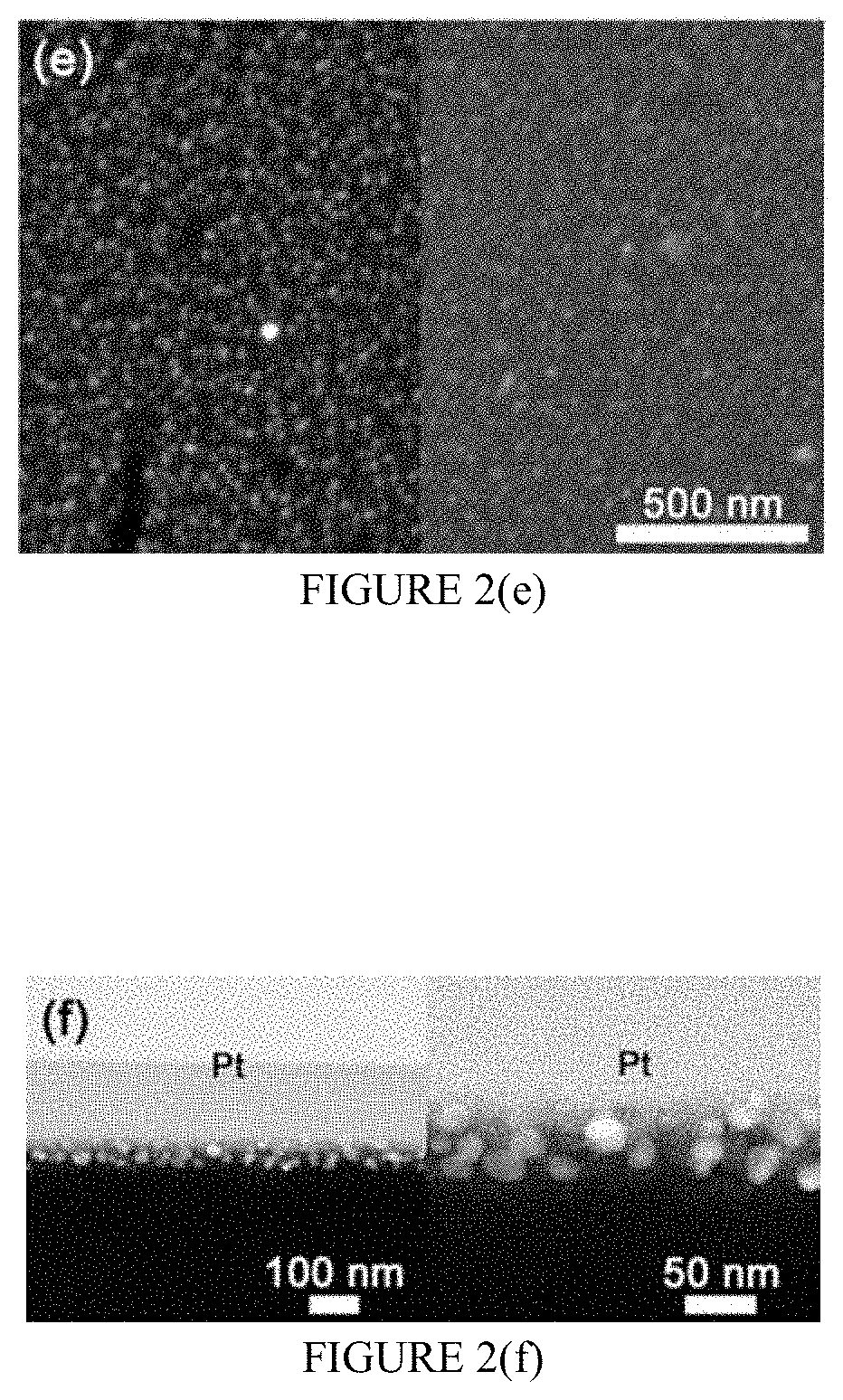Injection metal assisted catalytic etching
a catalytic etching and injection metal technology, applied in the direction of basic electric elements, electrical equipment, chemistry apparatus and processes, etc., can solve the problems of hg and tl making metals less attractive, metals with negative e° will be susceptible to rapid dissolution, etc., to improve economic viability and process control, improve thermal management, and improve the effect of etching ra
- Summary
- Abstract
- Description
- Claims
- Application Information
AI Technical Summary
Benefits of technology
Problems solved by technology
Method used
Image
Examples
Embodiment Construction
lass="d_n">[0025]FIG. 1(a) illustrates the ReEtch cycle for etching of silicon, Si. A vanadium ion in a +5 oxidation state, denoted V(V), injects a hole, h+, into the silicon valence band and is reduced to a vanadium ion in the +4 oxidation state, V(IV). The hole initiates the etching of silicon atoms to form a pore in the substrate. The product of the etching reaction is SiF62−. Injected hydrogen peroxide, H2O2, removes an electron from V(IV) to regenerate V(V) so that the cycle can begin again.
[0026]FIG. 1(b) illustrates the injection MACE cycle for etching Si, denoted iMACE. Injected H2O2 removes an electron from a metal nanoparticle, M, which then injects a hole into the silicon substrate. The hole initiates the etching of silicon forming the etch product SiF62−, to form a pore in the substrate.
[0027]Semiconductor dissolution and nanostructuring initiated by valence band hole injection is not limited to silicon but is a general process applicable to any semiconductor. The chemic...
PUM
 Login to View More
Login to View More Abstract
Description
Claims
Application Information
 Login to View More
Login to View More - R&D
- Intellectual Property
- Life Sciences
- Materials
- Tech Scout
- Unparalleled Data Quality
- Higher Quality Content
- 60% Fewer Hallucinations
Browse by: Latest US Patents, China's latest patents, Technical Efficacy Thesaurus, Application Domain, Technology Topic, Popular Technical Reports.
© 2025 PatSnap. All rights reserved.Legal|Privacy policy|Modern Slavery Act Transparency Statement|Sitemap|About US| Contact US: help@patsnap.com



